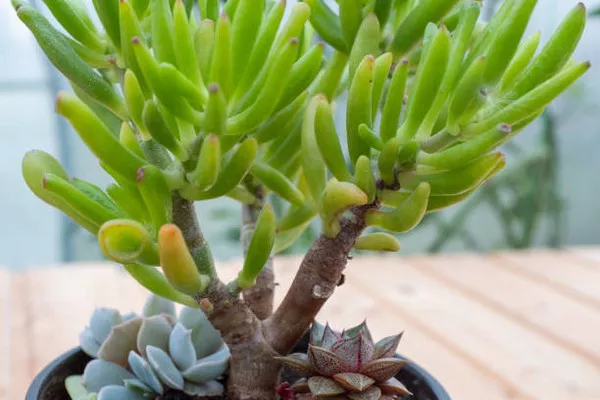Jade plants (Crassula ovata), renowned for their resilience and distinctive appearance, have become popular choices among indoor and outdoor plant enthusiasts. While these succulents are known for their ability to thrive in various conditions, understanding their sunlight requirements is crucial for promoting optimal growth and overall well-being. In this article, we delve into the factors that influence the sunlight needs of jade plants and offer insights into how to provide the ideal environment for their development.
Natural Habitat:
To comprehend the sunlight needs of jade plants, it is essential to consider their natural habitat. Originating from South Africa, these succulents typically thrive in arid and semi-arid regions with plenty of sunlight. In their native environment, jade plants receive abundant sunlight, often under direct exposure to the sun. This natural inclination towards sunlight provides a foundation for understanding their sunlight requirements in cultivation.
Light Preferences:
Jade plants are classified as low to moderate light plants, making them adaptable to various lighting conditions. However, for optimal growth and development, they prefer bright, indirect light. In their natural habitat, they receive filtered sunlight, as the surrounding vegetation and rocky terrain help diffuse the intensity of the sun’s rays. Replicating this environment is key to ensuring the well-being of jade plants in cultivation.
Indoor Cultivation:
For individuals growing jade plants indoors, providing the right amount and type of sunlight becomes crucial. These succulents thrive in bright, indirect light, making them well-suited for placement near windows with filtered sunlight. South-facing windows are often ideal, as they receive the most sunlight throughout the day. Alternatively, east or west-facing windows can also be suitable, ensuring that the plants receive a good balance of light.
It’s important to note that direct sunlight exposure for prolonged periods can lead to leaf burn, especially in regions with intense sunlight. To prevent this, consider placing sheer curtains or blinds to filter the sunlight and protect the jade plants from excessive exposure.
Outdoor Cultivation:
For those cultivating jade plants outdoors, understanding the sunlight requirements is equally important. Jade plants can thrive in full sunlight, but they also tolerate partial shade. When planting them in outdoor gardens or containers, select a location that receives at least four to six hours of sunlight per day. Ensure that the soil is well-draining to prevent waterlogged conditions, which can be detrimental to jade plants.
Consider the local climate when deciding on the placement of outdoor jade plants. In regions with hot and intense sunlight, providing some afternoon shade can be beneficial. On the other hand, in cooler climates, allowing the plants to receive ample sunlight throughout the day is essential for their growth.
Signs of Inadequate Sunlight:
Understanding the signs of inadequate sunlight is crucial for adjusting the placement of jade plants. If these succulents do not receive enough light, they may exhibit certain indicators of stress. Common signs include:
Leggy Growth: Insufficient light can lead to elongated, stretched stems, commonly referred to as leggy growth. This occurs as the plant stretches towards the light source in an attempt to capture more sunlight.
Leaf Drop: Jade plants may shed their lower leaves if they are not receiving adequate light. This is a survival mechanism to redirect energy to the healthier, upper parts of the plant.
Pale or Discolored Leaves: When jade plants lack sufficient sunlight, their leaves may become pale or show signs of discoloration. Healthy jade plants typically exhibit vibrant green leaves, and any deviation from this may signal light deficiency.
Supplemental Lighting:
In situations where natural sunlight is limited, supplemental lighting can be employed to meet the sunlight needs of jade plants. Grow lights with a spectrum similar to natural sunlight, particularly those rich in blue and red wavelengths, can be effective in providing the necessary light for photosynthesis.
When using grow lights, it’s essential to position them at an appropriate distance from the plants to avoid heat damage. Regularly monitor the condition of the plants and adjust the lighting as needed, ensuring they receive adequate light for healthy growth.
See Also What Do Plants Need For Photosynthesis
Conclusion:
Understanding the sunlight needs of jade plants is fundamental to their successful cultivation. Whether grown indoors or outdoors, providing bright, indirect light is key to promoting optimal growth and maintaining the plant’s distinctive appearance. By replicating their natural habitat and being attentive to signs of inadequate sunlight, plant enthusiasts can ensure that their jade plants thrive and continue to be a source of joy and beauty in their living spaces.


